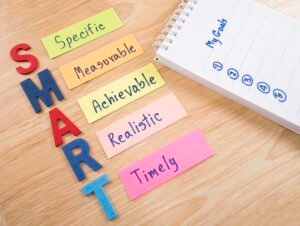How To Start Exercising Again

Introduction: So, It's been a while …
If you’re like most people, especially after the pandemic you probably know you should be exercising more. Starting exercise after a long time can be a daunting task. You may even have tried to get back into a workout routine in the past, only to find that it’s harder than it used to be or that you just don’t have the time.
But this shouldn’t stop you from wanting to return to the energy level and fitness you had before, no matter how many times you started and stopped in the past, how old you are or how long you have been since your last regular workout.
To start feeling more energy and have a better mood and focus is to remember that by starting moving physically, your physical and mental state will improve, and you will feel much better.
If you are ready to start again, here are some steps that could help you:
If you are thinking how to start here are some steps that you can take:
Table of Content
1. Review: What's most important?
Before restarting your fitness journey, ask yourself why you want to start training again. What would you like to be, feel, or experience in life that you long for, have a desire? Why is that so important, and how much?
Different people exercise for various reasons. Some do it to keep fit or for health reasons, while others exercise to lose weight. Whatever the reason you have for training, make sure you are connecting to what matters most and that you are doing it for yourself and not anyone else.
Be honest and ask yourself why you stopped exercising in the first place. There are many reasons why people stop exercising, such as;
- sickness
- family issues
- lack of money to pay for a gym membership
- got bored with the exercises and wanted a change
- become tired, and you lack the energy to exercise
- lack of time because of other engagements.
If you are contemplating starting to exercise again, here are a few reasons why exercising is essential for your health. Exercise has many benefits for physical health, including reducing the risk of chronic diseases such as heart disease, stroke, and type 2 diabetes. It can also help improve your mental health and mood, increase your energy levels, improve brain function and help you sleep better.
As you can see, there are many reasons why today is a good day to make exercise a priority and to start again.
2. Prepare: Getting Back Safely
Your new exercise program is far more likely to be successful if you:
Check with your doctor
Before stepping on that treadmill, check with your doctor, especially if you have an underlying condition like diabetes or you are over 50 years of age. It is imperative to get your health checked and cleared before starting to exercise again to avoid causing yourself any complications down the line.
Regularly see your doctor during your exercise program.
Get proper workout Gear
Part of being ready to hit that gym or go back to jogging is ensuring you have the right workout gear. Many sports injuries can happen during a workout, and proper workout equipment can protect your body against such injuries.
Listen To Your Body
When exercising, always listen to your body. If you have started your exercise and noticed that you are struggling or in pain, stop and seek medical attention. The exercise may be straining your body, and your persisting can cause you more harm than good. You may even consider choosing another activity or reducing the intensity or duration of the exercise.
3. Planning: Set Some Goals
If you need to achieve anything in life, set a SMART goal to keep yourself accountable. Set a realistic and measurable plan, so you observe your progress as time passes.
Ask yourself why these questions.
- Why do you plan to start training again?
- What do you want to achieve from the exercises?
- What are you ready to do to achieve your goal?
- How long will you need to achieve your goal?
- How your goal aligns with your vision and life desires?
People fail to achieve most of their goals because they fail to plan. The questions will clarify why you have set the goal and what you are willing to do to achieve your goal, and answering the above questions will help identify what you need to do to ensure success.
Some tips during your planning:
- Set small, achievable goals and then gradually increase your activity level.
- Select an activity that you enjoy and match your fitness level and ability
- Select a workout routine that works for you and your lifestyle
- Join a gym or a workout partner or group
- Seek professional Accredited Exercise Professional to create the exercise program specific to you and if needed, to your current health condition.
- Book sessions or a program with the Certified Health and Wellness coach to create a plan to keep a balance in your life and provide support during the challenging process.
4. Schedule: Finding time
Self-development author Brian Tracy said, that “It takes 21 days for a body to form new habits”. To ensure you don’t fall off your workout routine easily, challenge yourself to train for 30 days straight without taking any breaks to develop a new workout habit.
Set aside time and place you will use to exercise every day. Having time assigned for your workout will make it easy for your body to adjust and be consistent. It is easy to move away with things in life and push aside workouts when you get something else to do when you don’t have a set time aside.
When you set your mind and schedule time, you’ll see that it is much easier to remain consistent without big efforts and to make it a routine.
5. Getting started: Just do it!
Start Slow
Michaell Hyatt says, “Don’t be discouraged by a slow start. It offers the time and testing you need to lay the right foundation for success.” Grant your body some time to adjust to your new routine.
Don’t expect your body to have the same strength and stamina you had before you stopped exercising. When you stop working out, your muscles shrink, so you need time to build your muscles and strength again.
If you plan to run, you can start with a low-intensity workout like brisk walking or jogging for a shorter time before going for the five meals. A slow start gives your body time to adjust and build the strength and endurance to run for five miles.
Alternatively, start with a 5 to 10 minutes walk between work or take the stairs instead of an elevator. The small session exercises have the same effect on the body and will help you build cardiovascular fitness, improve mood, focus, and control blood sugar levels.
Focus on small increments
The key to your fitness goal is staying focused on one thing at a time. Don’t start excising the same time you start a new diet if that puts pressure on you. You will then get overwhelmed with all the recent changes and want to quit.
Same way with exercise; if you plan to start with, let’s say, brisk walking, don’t mix it with weight lifting in the beginning. Walk for a few days, and once your body has started to get used to it, you can include small weights to increase the intensity of the workout.
Warm Up
Always include 7- 10 minutes of warm-up before and after the workout. This crucial pre and post-workout practice will help warm up the body, prepare your muscles for the strenuous moves you will be making during training and protect you against sports injuries.
6. Keep on track: Stay motivated
Get a workout partner.
Surround yourself with people who are interested in achieving the same goal as you. You can find these people from your gym, where you go for a walk, or through fitness apps. A workout partner will help you push yourself and stay motivated towards achieving your goal.
Make it fun
If you love listening to music like hip-hop or a motivational speech when working out, make sure you have that next to you when training. Your workout session shouldn’t be boring and quiet. Listen to that music and dance once in a while when you finish your rep.
Spice your workout
A workout session shouldn’t be all serious, and you can make it a game and still get the same results. If you don’t enjoy going to the gym, consider other forms of training sessions like dancing class, swimming or playing games like volleyball or football.
Track your progress
The best way to always stay motivated is to track your daily progress. Write down what you did and how you felt during your reps. Seeing how much your body has improved in endurance from 5 push-ups to 10 push-ups will give you the needed boost to stay motivated. Seeing the progress of your emotional and mental state can also be very motivating for further positive changes.
Reward yourself
You have pushed yourself to achieve something, don’t be shy to reward yourself. If you love to take a hot shower, grab a cup of tea, banana smoothie, or watch TV, then reward yourself with an episode of your favourite show. A treat after the workout will give you something to look forward to and stay motivated during your workout session.
Remind yourself how you feel after
Reminding yourself how good you are post-workout will help you stay motivated and achieve your fitness goal. Focus on;
- How happy you felt after the workout.
- How it felt when you saw your progress, e.g., weight loss, muscle tone, and increased body endurance
- How soundly you sleep at night and wake up feeling fresh
Channeling these feelings will motivate you to stay focused on your fitness journey.
Prepare the night before
If you are struggling to go for your morning exercise, consider preparing everything you need the day before. Increase your efficiency by packing your gym bag and preparing your workout clothes and shoes. Also, have all your pre-workout meals prepared the night before.
85% have reported being more motivated to do their morning workout when they pre-are everything the night before. They are mentally prepared for the workout session by preparing everything the night before.
Also, they have fewer excuses in the morning because they don’t waste much time getting ready once the alarm goes off.
7. Conclusion: You can do it!
Getting back in shape or achieving your fitness goal after taking a break can be challenging, especially in the first few weeks, but you can do it once you set your mind.
Start by getting yourself cleared by your doctor or wellness coach and commit to a workout plan for the first 30 days. The 30 days will enable you to form a new workout habit which will be beneficial to achieving your fitness goal.
Lastly, don’t make it too serious. Make sure to enjoy your fitness journey by picking what works for you. It is the only way to stay motivated and commit to your fitness journey for many years.













